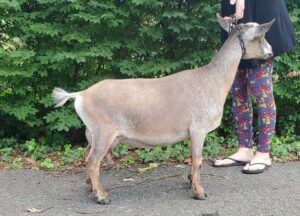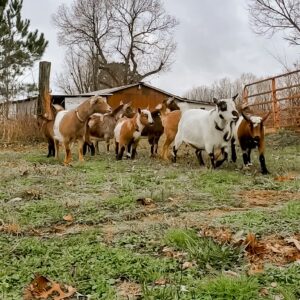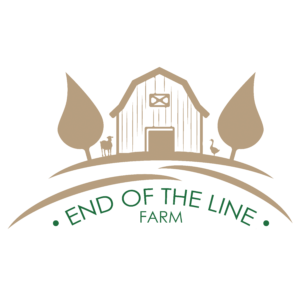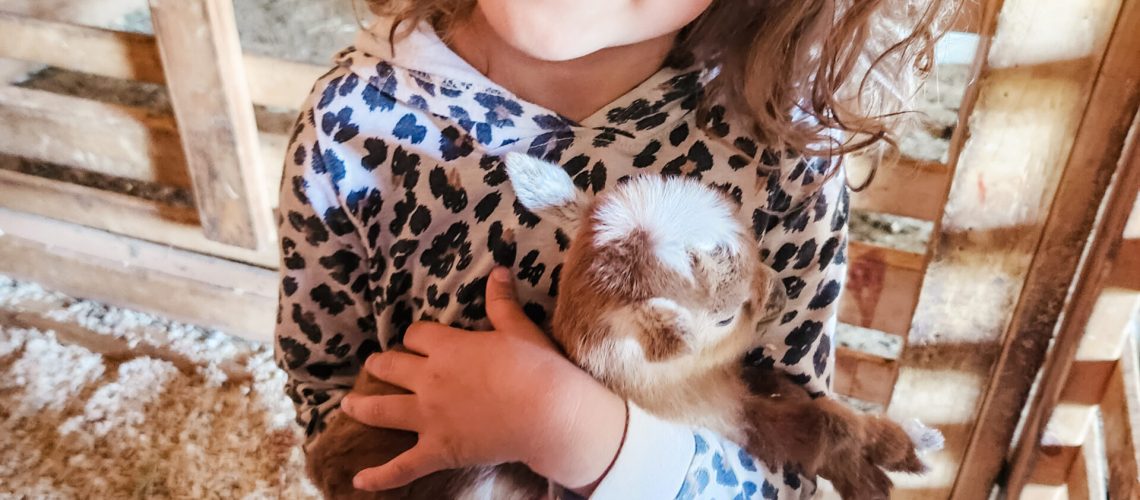In the world of goats you will come across this issue a lot. Many are divided on horns or no horns for their herd. While I love the beauty that horns are for a wild goat, in a domestic dairy or pet situation it is my opinion that having a hornless goat is safer and a better choice for the herd owner.
Simply put a goat with horns poses a safety risk to humans even if they are not aggressive and have no intention of hurting or harming a human being. They can also cause damage to other goats inadvertently or on purpose.

Fencing and hay feeders poses a risk to a goat with horns as they can get their heads through small openings but then not be able to move their head back through. A goat stuck in a fence or feeder can die from exposure, dehydration or just shock. These are extreme cases but something to consider. See more about how to handle fencing for goats in my blog post here.

For showing purposes a dairy goat cannot have horns. This is the case for 4H as well.
So now what? Your goat is not polled (naturally hornless) so what can be done to make them a safe pet for you and your family? Well, the answer is a process called disbudding.
Disbudding is done when the goat is just a kid before the horn bud adheres to the skull. 1-2 weeks old is best. The process includes using a hot iron to kill the horn base, so it stops growing. Is this painful? Yes, it is. But done properly it’s only a couple seconds and the kid is back up and running, nursing and possibly even playing immediately after. I’ve had some kids be extremely dramatic and others go right off and headbutt another kid! There is always a chance for scurs (small bits of horn growth) to grow especially on intact buck kids as their horn base is much larger and can be difficult to discourage from growing. This is why it is important to do this process when as young as possible so the iron can fit over the entire area effectively.

